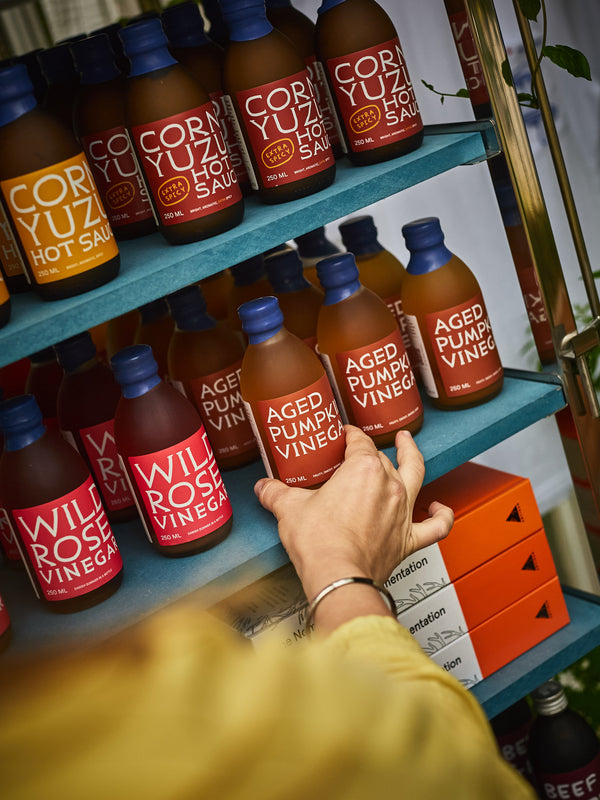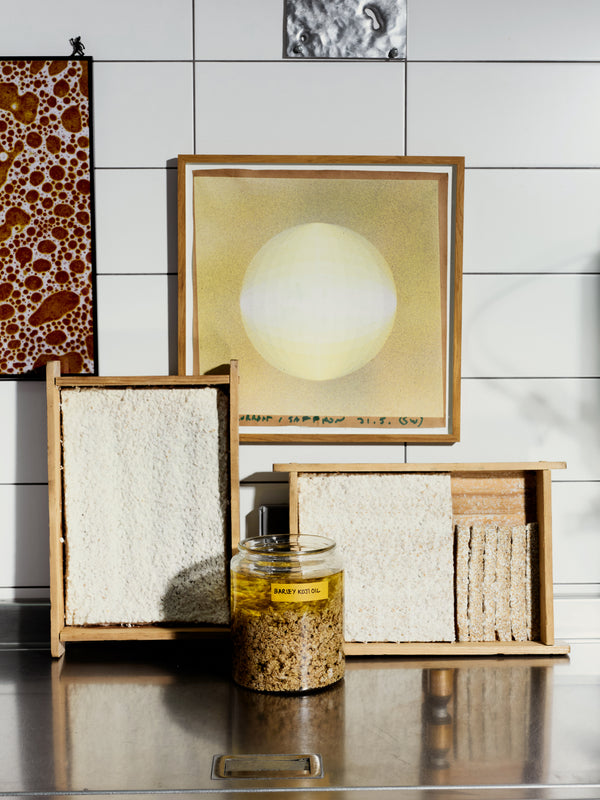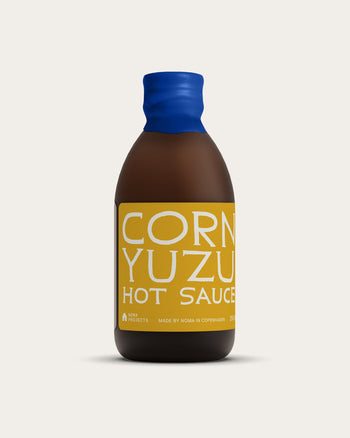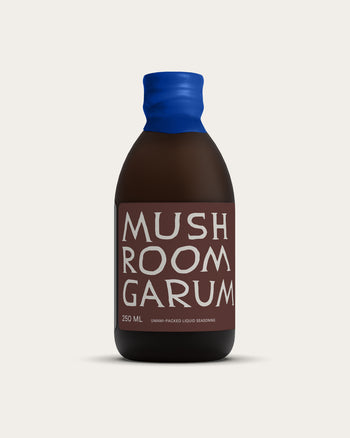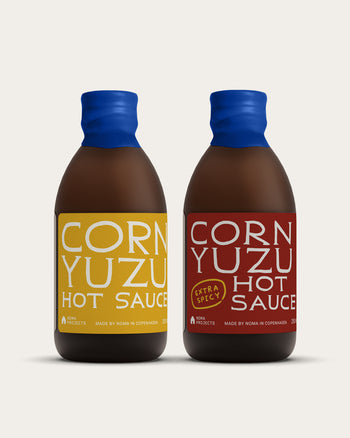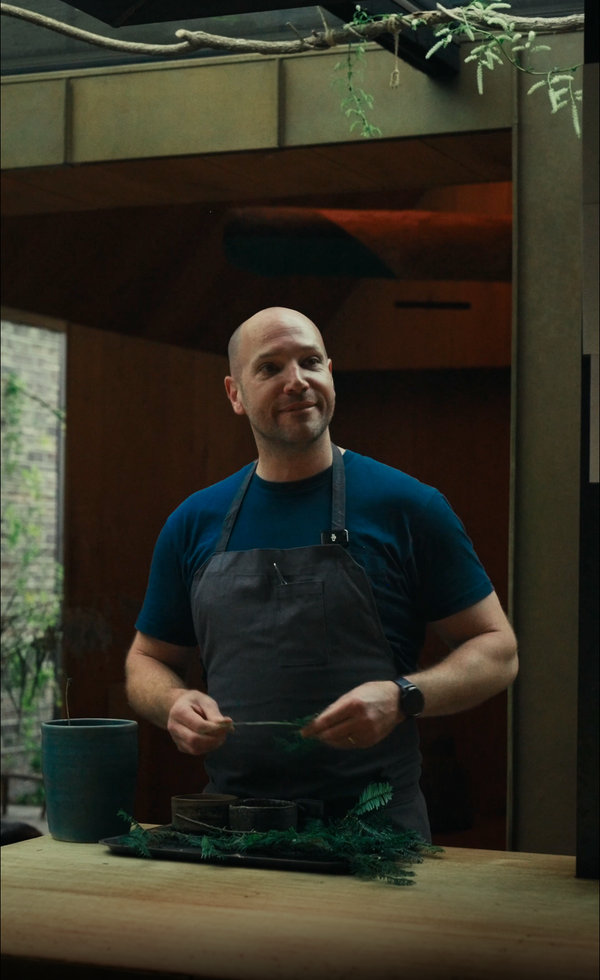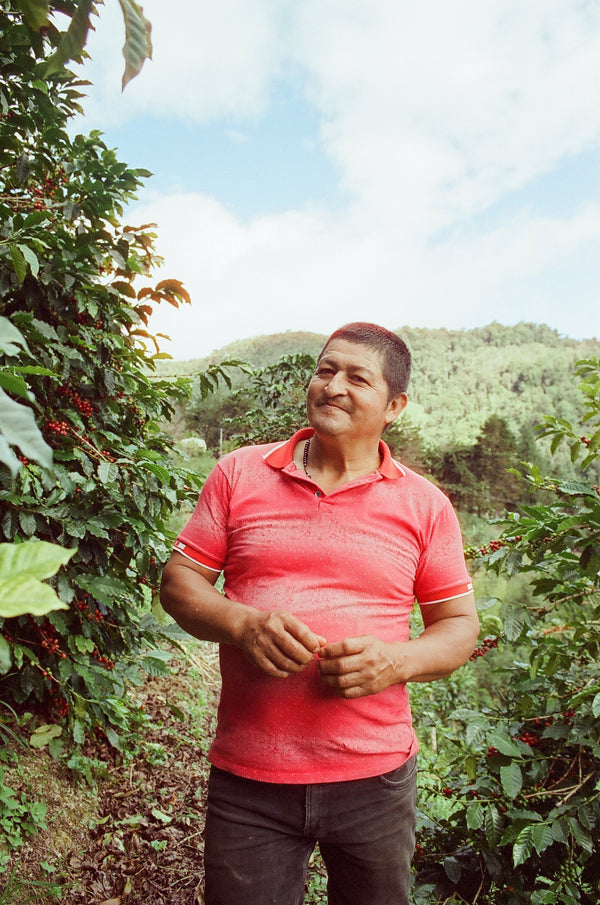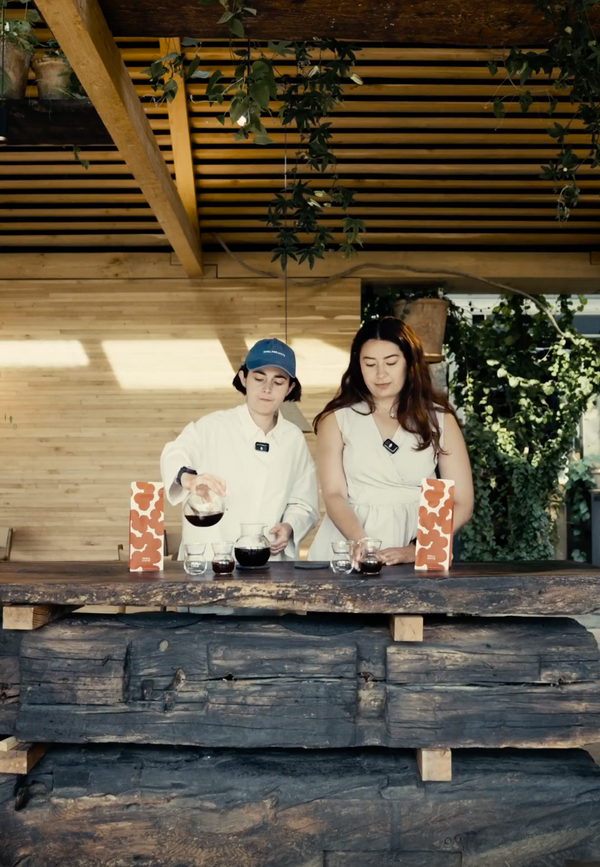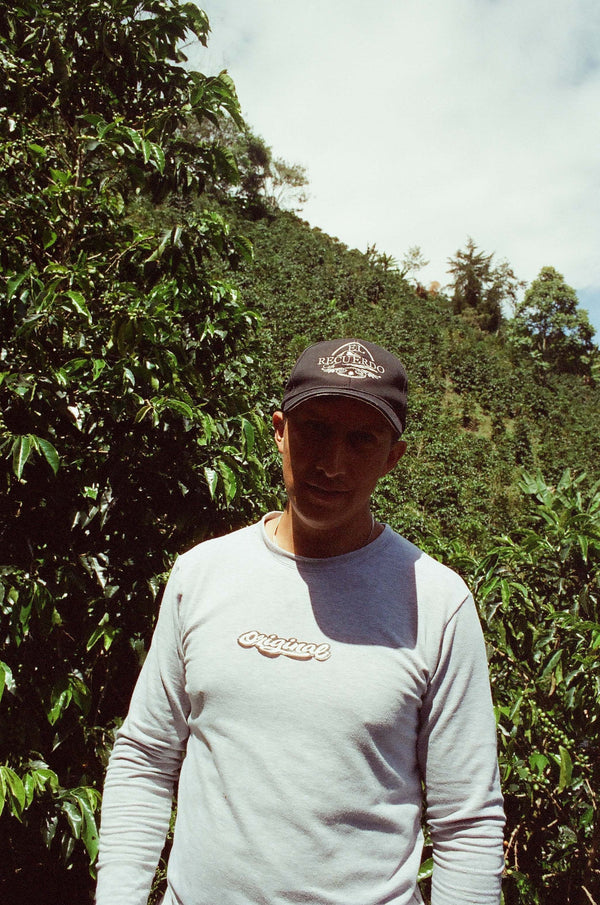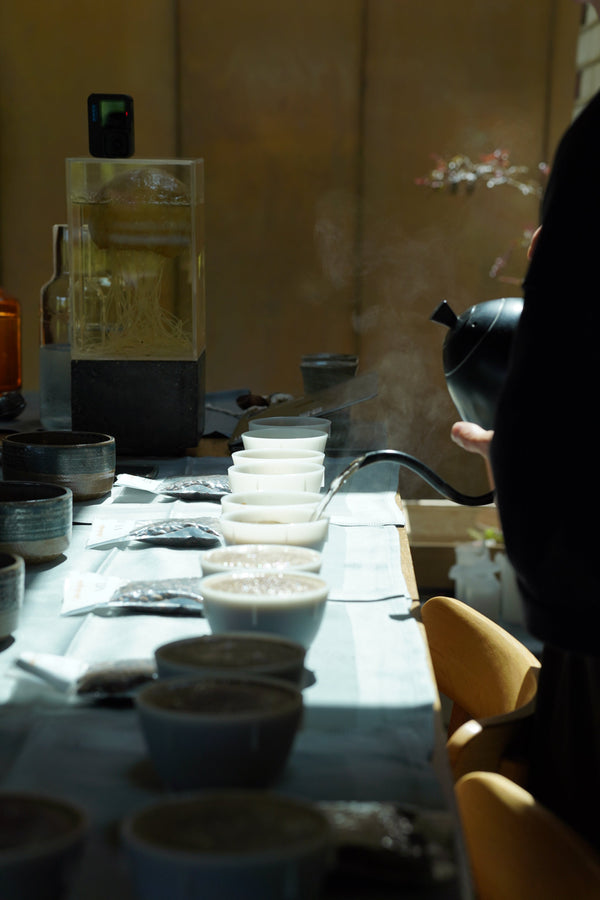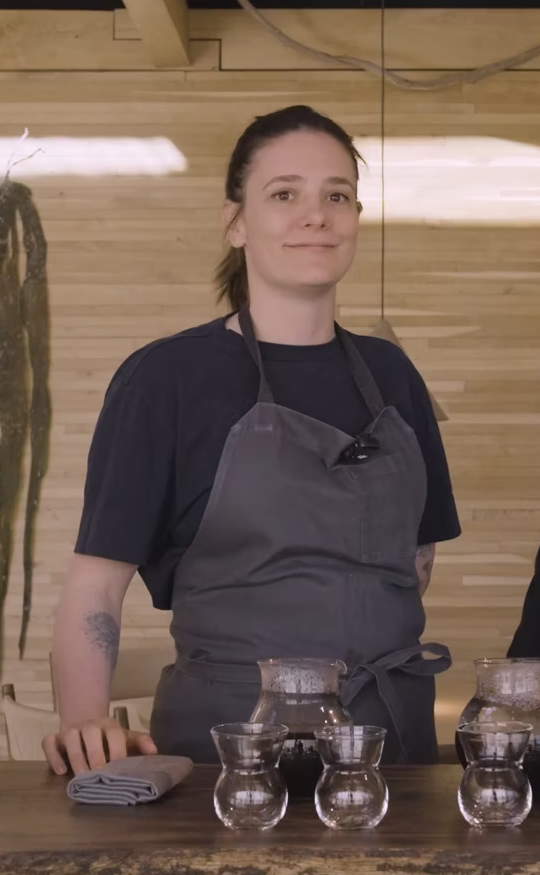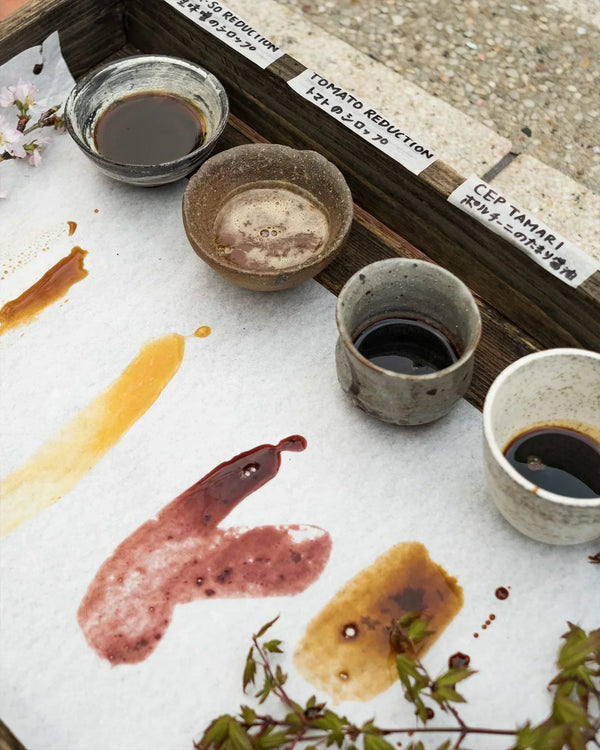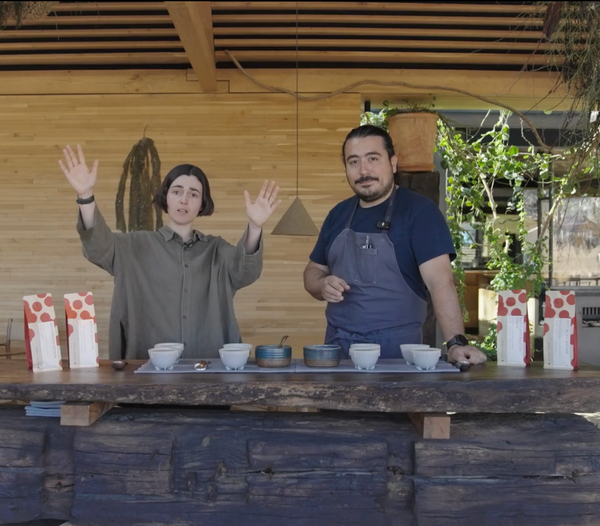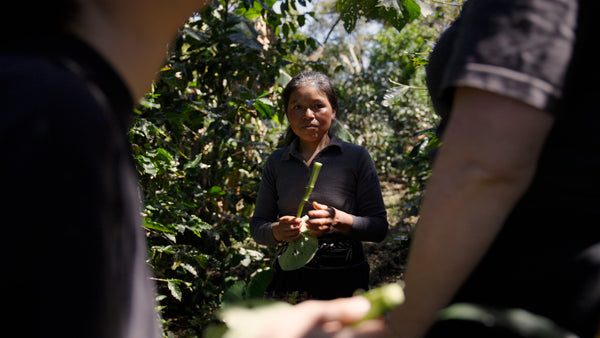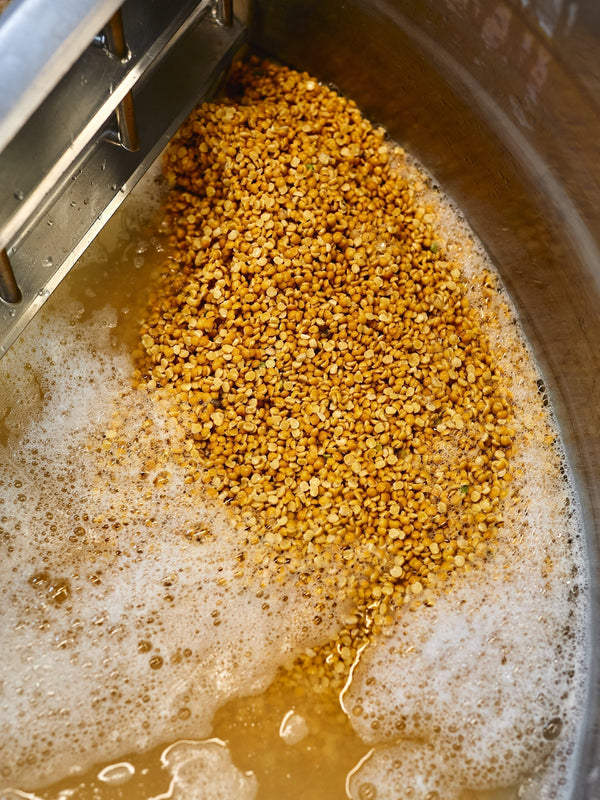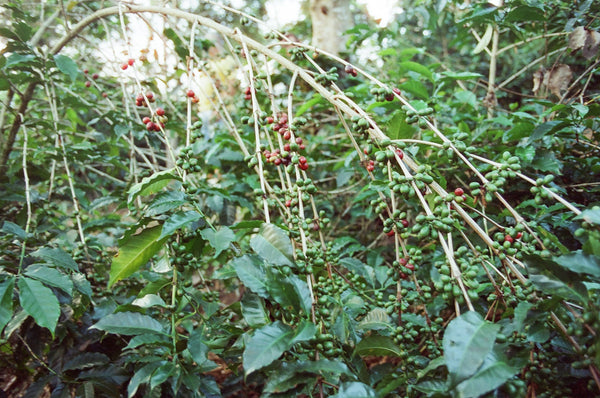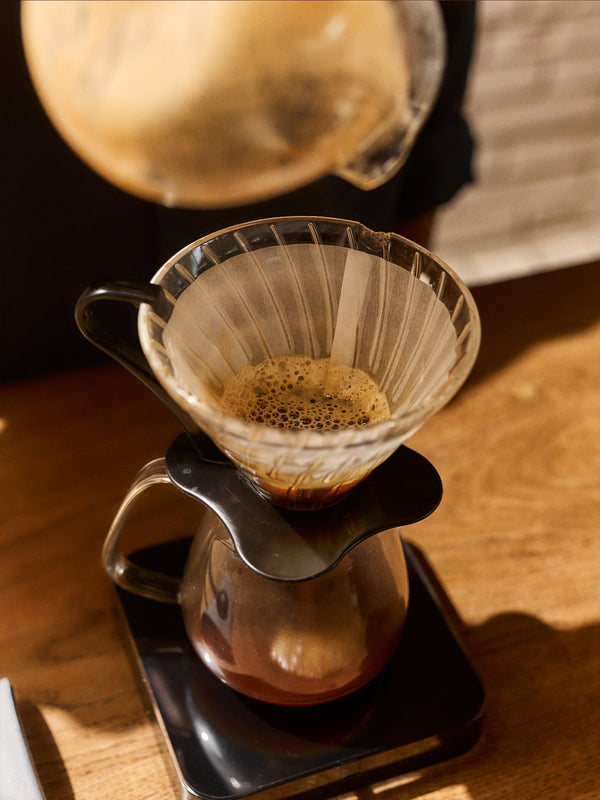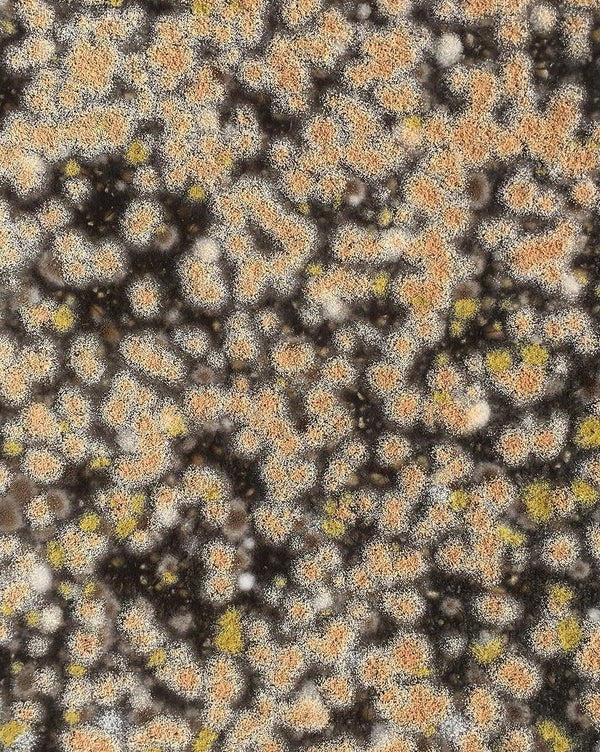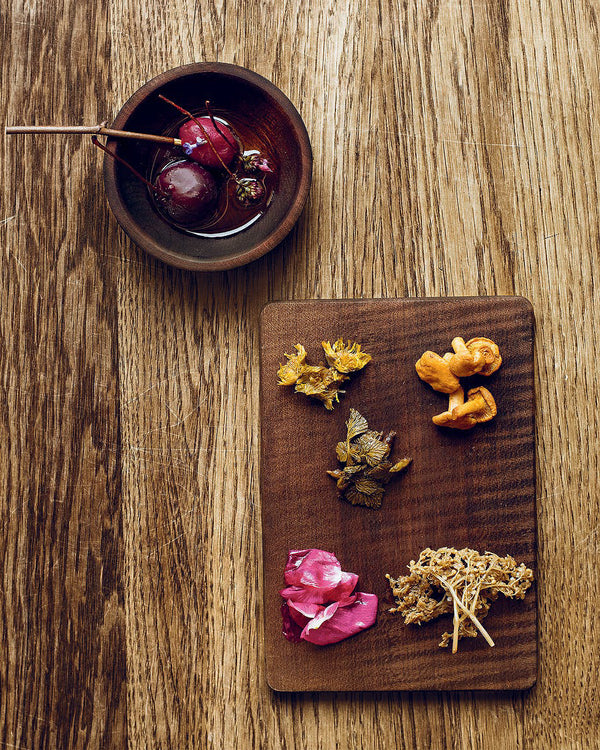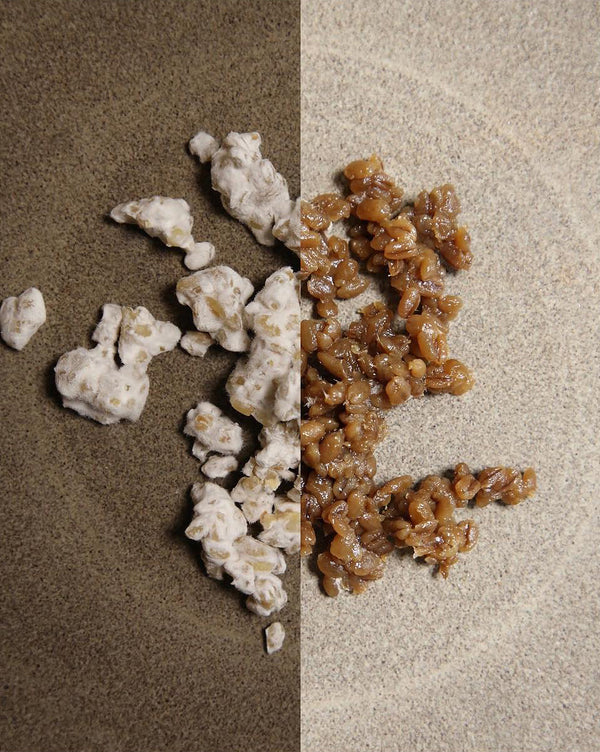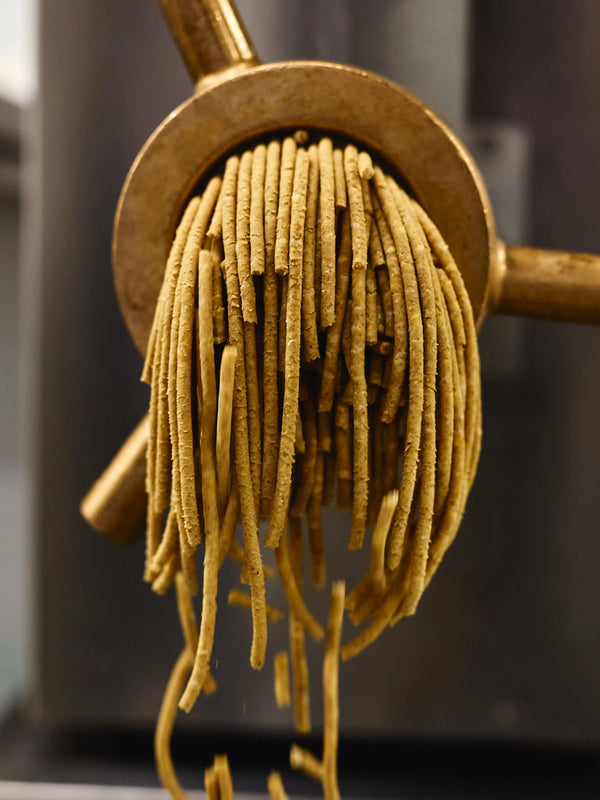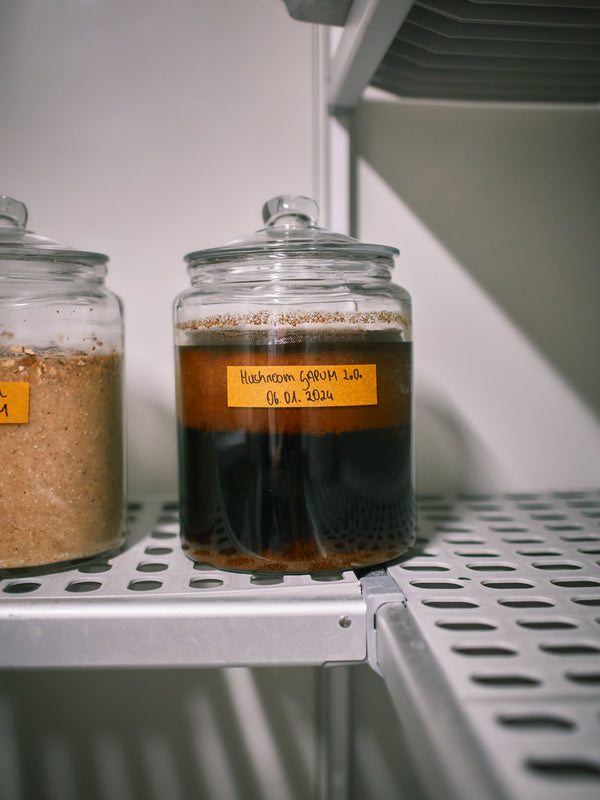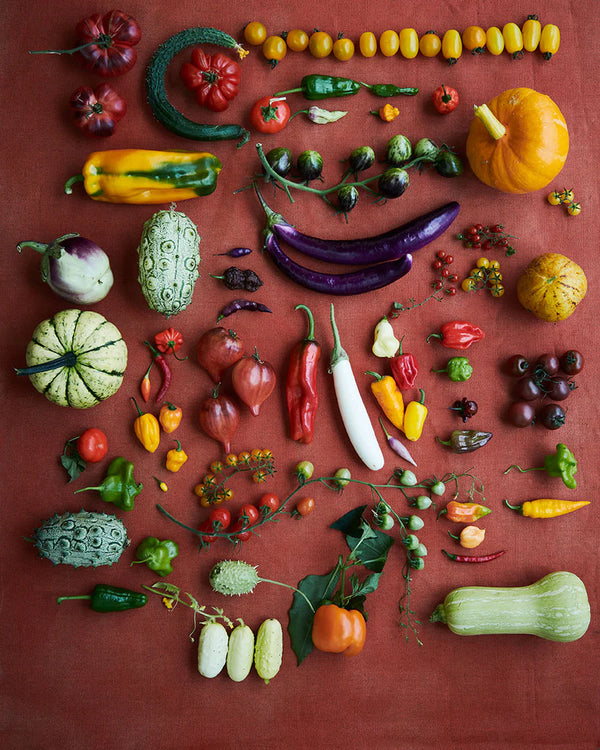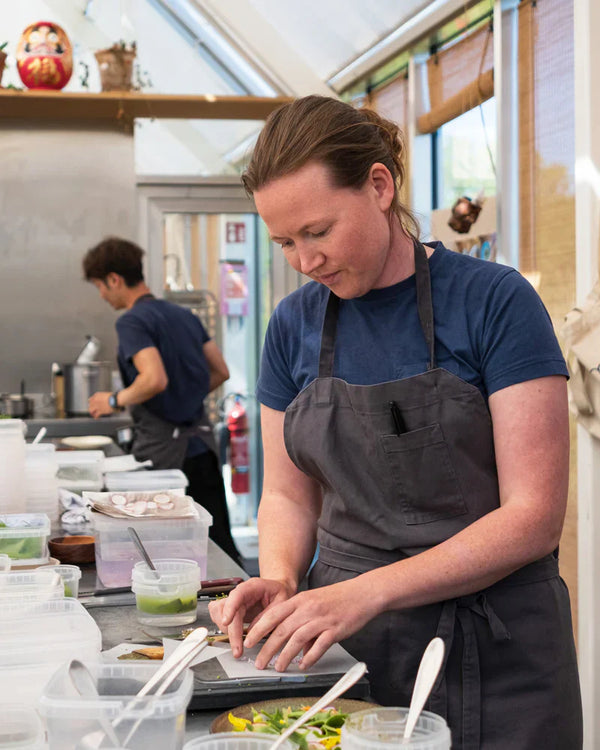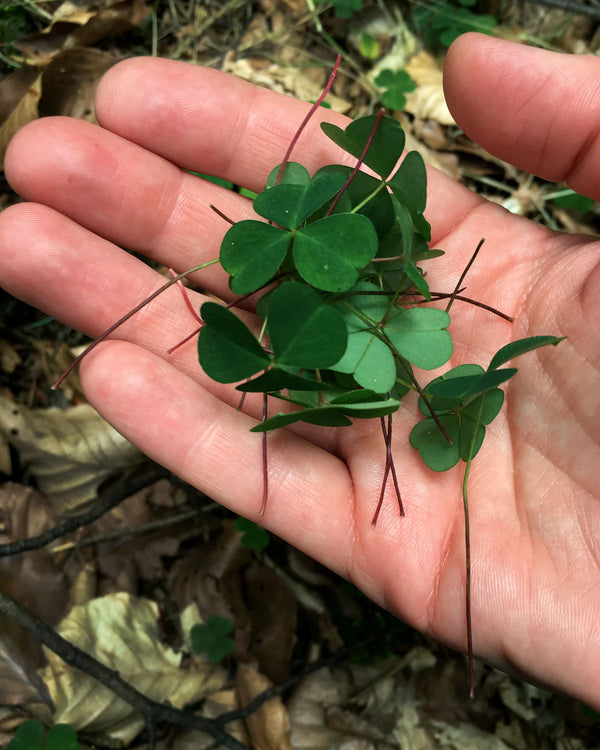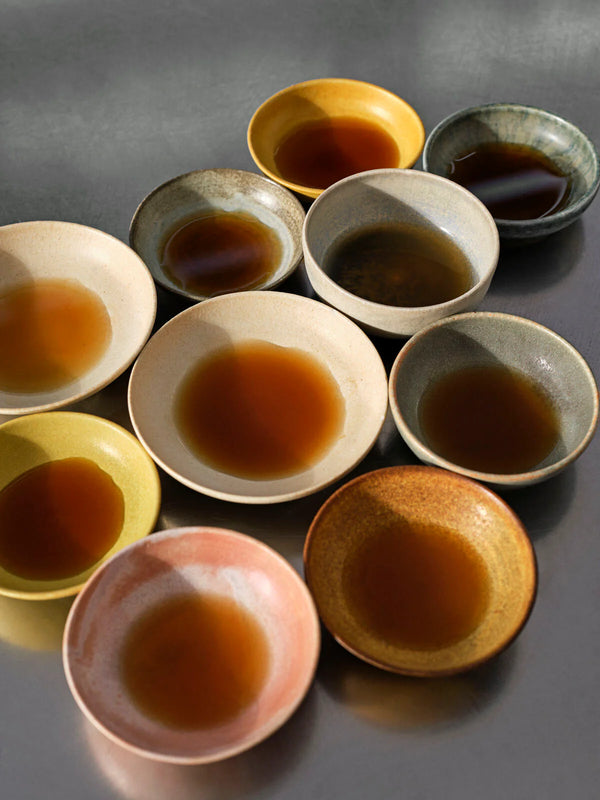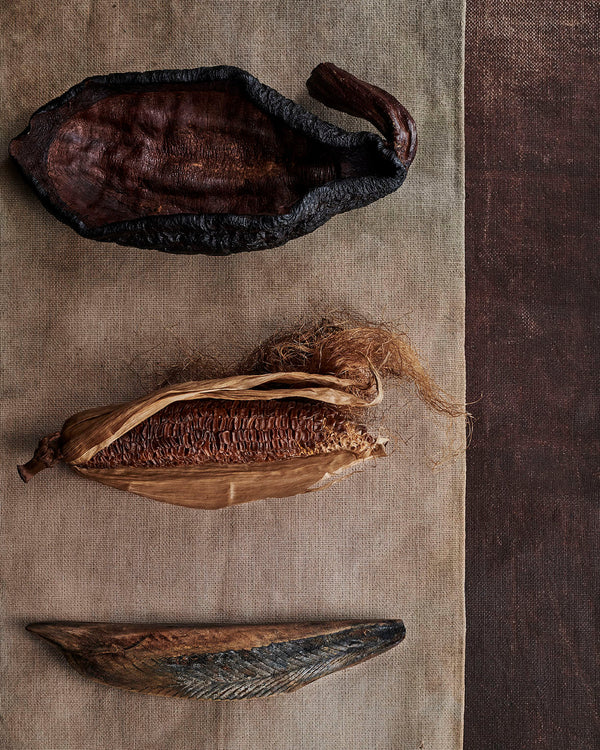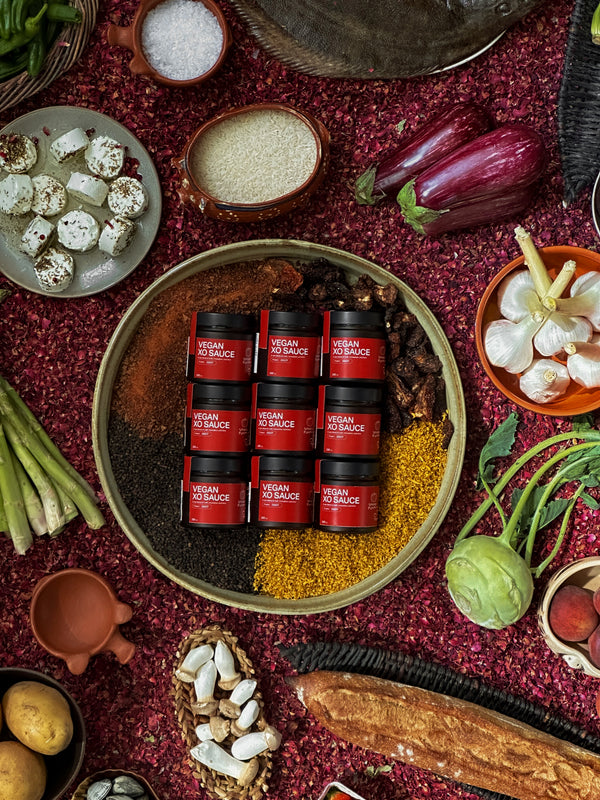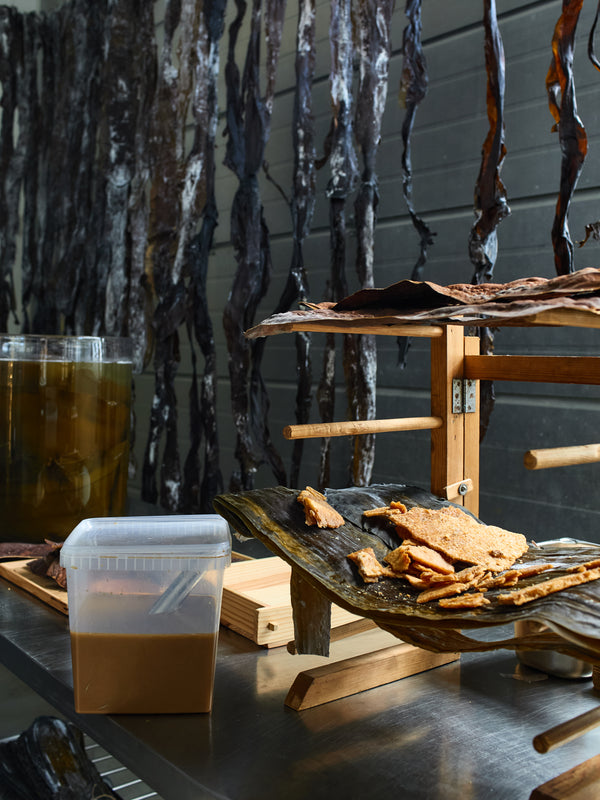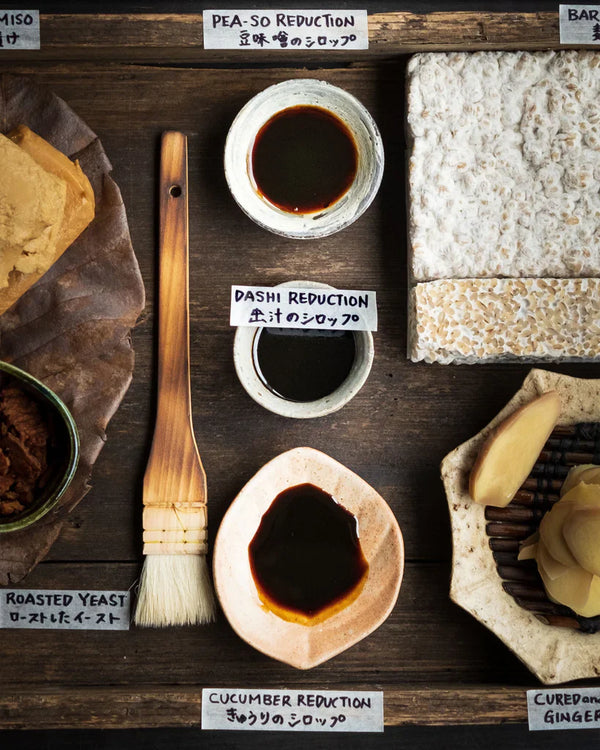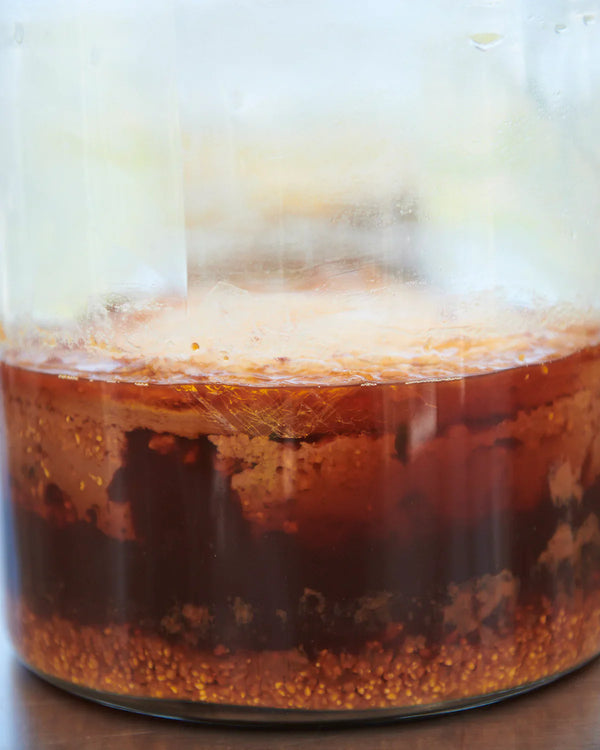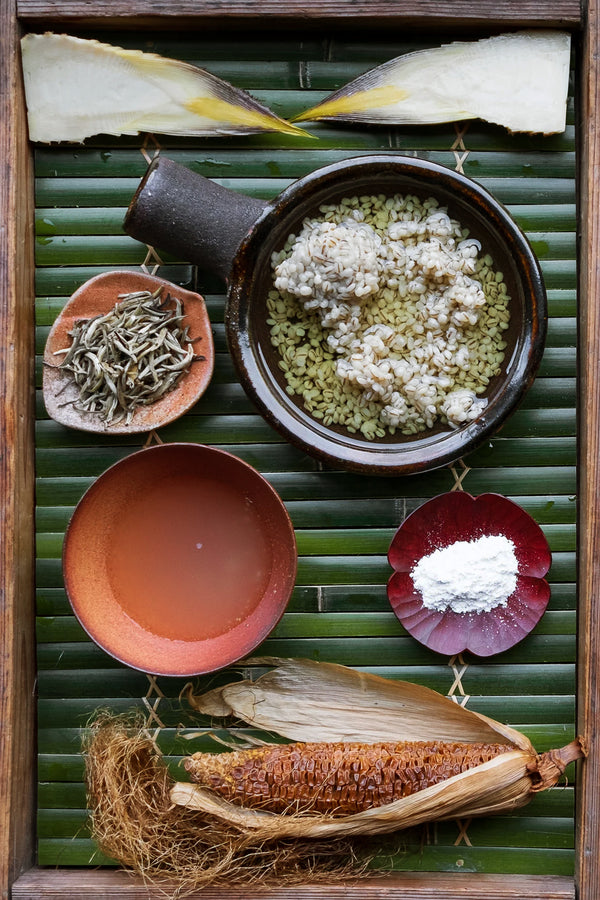Turning Sweet to Sour
There’s not a dish on the menu at Noma, from the very first mouthful to the last, that doesn’t involve some element of lactic acid fermentation (aka lacto-fermentation). Its usefulness is practically limitless.
Lacto-fermented products bring fruitiness, acidity, and umami to everything they touch. For instance, lacto-fermenting cep mushrooms (porcinis) yields an incredibly potent liquid that we use to season fresh sea urchins. Just a drop or two over each tongue of sea urchin will make your hair stand up—it invigorates and focuses the flavor of the urchin in an unbelievable way. It’s like taking a picture of an urchin and cranking the saturation and contrast way up. As for the actual mushroom, we soak that in syrup, dry it, and dip it in chocolate to make a candy that accompanies coffee at the end of the meal.
Thankfully, lacto-fermentations are also incredibly straightforward to make. The process is simple: Weigh your ingredient, add 2% salt by weight, and wait. How many days depends on how sour you want the final product to be.
It’s all made possible by the hard work of lactic acid bacteria, or Lactobacillales (we’ll refer to them from here on out as LAB). LAB transform sugar into lactic acid, and they’re the secret behind sour pickles and sauerkraut, rye breads and sourdoughs, yogurt, and sour beer. They’re also involved (to a lesser extent) in making wine, cheese, and miso, contributing to the nuance and complexity of flavor that characterize these and many other iconic fermented foods.
Generally speaking, LAB are acid- and salt-tolerant, rod- and sphere-shaped bacteria. They’re anaerobic, meaning they can flourish in the absence of oxygen. LAB consume carbohydrates, mostly in the form of sugars, and produce lactic acid as a metabolite (a by-product of their metabolism). Without getting neck-deep in the chemistry, the process involves the bacteria using enzymes to break down glucose (C₆H₁₂O₆) in order to harness its chemical potential energy, and thus converting each molecule of glucose into two molecules of lactic acid (C₃H₆O₃).

Left: It's a microbe's world. We're just living in it.
Right: Bacteria can actually communicate with one another in a language of chemical gradients.
Species of LAB that specialize solely in converting sugar into lactic acid are classified as being homofermentative, while others are heterofermentative, meaning their metabolites can include not only lactic acid but also other molecules such as alcohol, carbon dioxide, or acetic acid. Some species of LAB are able to break down proteins into amino acids, giving cheeses like cheddar and Parmigiano their unspeakable deliciousness.
Like humans, LAB are industrious creatures that have managed to occupy environments the world over. They’re present in the milk of mammals, meaning you’ve been involved in an intractable relationship with these bacteria since the first moments of your life. And fortunately for us, LAB are present on the skins and leaves of just about any vegetable or fruit you would ever want to ferment, patiently waiting for conditions to favor their needs.
At Noma, we practice “wild fermentation” for nearly all our lacto-fermented products, allowing the normal populations of bacteria already living on our food to kick-start the fermentation process. In any given wild ferment, there will be multiple strains of bacteria vying for position, blooming and fading at different times, each adding its unique voice to the chorus of flavors. It’s the intricacy of this interaction between different LAB that makes wild ferments so delicious.
One of Noma’s longtime friends, Patrick Johannson (aka the Butter Viking), once sent a sample of the wild cultured butter he’d made to a food lab for analysis, and found twelve distinct species of LAB cohabiting within it. Commercial operations often try to approximate the intricacy of wild ferments by manipulating factors like the temperature of a ferment over time, tweaking the conditions to suit different bacteria that produce specific flavors. LAB behave differently depending not only on temperature, but also the availability of nutrients, population density, and who their neighbors are. Chemical cues allow for communication between microbes that informs everything from their growth patterns to their rate of reproduction.

Aided by nothing more than salt, LAB can perform incredible transformations.
Beyond the Cucumber
The most common lacto-fermented vegetable in the Western world is the standard-issue sour cucumber pickle, which is lacto-fermented in brine. At Noma we look further afield for vegetables to lacto-ferment, but we always keep in mind the characteristics that make a basic dill pickle so enjoyable to eat. We look for things that are (1) tasty when raw and (2) juicy but not mushy. The latter trait is important because so much of a pickle’s appeal is its crunch. (As any Scandinavian will tell you, slices of cured fish garnished with bits of pickled vegetables are one of life’s great textural partnerships.) We’ve had amazing success making lacto-fermented pickles from white asparagus, small pumpkins, beets, and cabbage stems. Leafy greens like watercress and ramsons have been... less rewarding.
Of course, vegetable pickles are only one direction in which you can go. Once you understand that anything with sugar can be lacto-fermented, it opens up a world of potential. It’s an absurdly basic realization, but once it occurs to you, you can’t stop thinking, What else can I give the lacto treatment?
Every September at the restaurant, at the end of the berry season, we lacto-ferment blueberries, raspberries, mulberries, blackberries, white currants, and pretty much any other soft fruit we can get our hands on. Even though it lacks the crunch of a fermented root vegetable, the finished puree-like mash is a prize in itself—both sweet and savory, with multiple layers of sourness.
As LAB ferment sugar, the resultant lactic acid mingles with the acids already present in the fruit. Citric acid—most commonly associated with citrus fruits but also found in many other fruits and berries—can be quite tart and almost give off a burning sensation. Malic acid, found in grapes and apples (think of the tartness of a Granny Smith), is much rounder and mouthwatering. Ascorbic acid is sharp and direct, and can be found in all kinds of tropical fruits, from bananas to guava. The interplay of different acids is one of the most interesting and beautiful facets of fermented fruits.
Because the berries usually lose their shape and texture when lacto-fermented, we often use a juice press to harvest the juices. Fermented berry juice is incredible—it has body and effervescence, saltiness, sweetness, and acidity. Mix fermented raspberry juice with a spicy olive oil, add a few grinds of floral spice—maybe long or pink peppercorns—and spoon the resulting vinaigrette over thick slices of ripe beefsteak tomatoes. Sprinkle it with sea salt, sugar, and a few torn leaves of marjoram, and it’s the perfect distillation of late summer. And don’t throw away the berry pulp. It will bring nuance and brightness to a bowl of fresh berries, topped with freshly whipped cream.

Lacto-fermented berries are powerhouses of flavor.
—
To keep reading: Order your copy of the The Noma Guide to Fermentation today.
